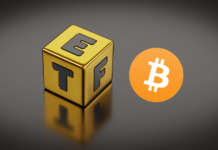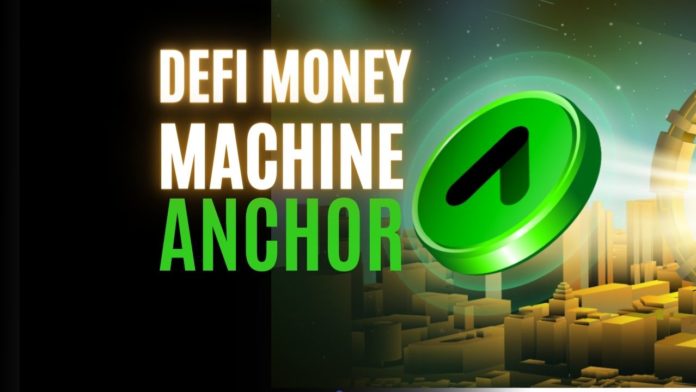From a bullish perspective, things seem very boring right now. FUDs aside, what should a smart investor be doing right now?
The answer is obvious. We should be looking out for passive income opportunities, especially on stablecoins which seem very lucrative. In this article, you will discover how you can start using this Terra Luna protocol.
Anchor Protocol Leads DeFi
The high yields promised by many protocols are not sustainable. However, one big exception has been Anchor Protocol, which still offers interest rates of around 20% on stablecoins.
And now that it has gone inter-chain, it’s taking the passive income opportunity beyond the Terra ecosystem.
The Anchor protocol is just a year old and has already locked a whopping $15.7 billion in TVL. But how can you make double-digit gains using Anchor? How long will its reserves last? What are the risks? Let’s find out.
The Team Behind Anchor Protocol
Terraform Labs (TFL) built Anchor Protocol. Based in Seoul, South Korea, they are also the team behind the Terra blockchain. By launching Anchor, TFL realized its vision by combining three financial basics:
- Payments by UST
- Savings via Anchor Protocol
- Investing with Mirror Protocol
And it offers the following features:
- High, stable deposit yields
- Instant withdrawals
- Principal protection
Also, Anchor offers a high yield with lower risk on the UST stable coin, which is Terra’s stable coin. Therefore, Anchor is not just another protocol in the Terra ecosystem. It has been written by Terra Co-founder, Nicholas Platias, Head of Research at Terraform Labs.
One year, $15+ billion in TVL, and now coming to a blockchain near you.
Keep fading. We're gonna keep building.
More to come.
xAnchor:
https://t.co/6LWbZfhrNP https://t.co/MCunXgd72b— Anchor Protocol (@anchor_protocol) March 17, 2022
What Makes Anchor Protocol Different?
Anchor is a decentralized savings protocol. They offer low-volatile yields on Terra stablecoin deposits with the following DeFi services:
- Lenders look to earn stable yields on their stablecoins
- Borrowers looking to borrow stablecoins on stackable assets
The yield for UST is currently 19.48% This is in contrast to bank interests which are around 0.5%. At its core, Anchor works similar to a bank savings account. Locking money up earns interest. So, how can Anchor offer 20%?
First, we need to look at some Terra and Anchor tokens:
- UST or TerraUSD: This is the Terra blockchain’s decentralized and algorithmic stablecoin.
- LUNA: Terra’s governance and staking token. This keeps the UST pegged to the USD.
- ANC: Anchor’s governance and staking token.
- bAssets: Bonded assets like bLUNA or bETH. These tokens represent a staked asset like LUNA or ETH. bAssets offer block rewards to their holders. They are transferable and fungible, just like staked assets.
- aUST: These constitute deposited stablecoins. You can redeem these for the initial deposit along with accumulated interest.
When borrowing, it is best to install the Terra wallet. Here are the steps you need to follow to optimized your stake strategy in Anchor.:
- Now, first bond LUNA with bLUNA. This will be your collateral.
- Now deposit the bLUNA so you receive UST when you borrow.
- Pending on how much bLUNA you deposit, you receive UST. Keep in mind that you are always over-collateralized.
- Next, deposit the borrowed stable coin. The reward is in ANC, Anchor’s native token.
- In turn, use the ANC token to stake for governance rewards 8.5% APR. The ANC-UST liquidity pool is also an option. APR here is 78%. This requires both tokens.
Moreover, Anchor Protocol earns a return by staking the borrowers’ LUNA collateral.
Anchor Ecosystem
When we look at the Anchor ecosystem, we need to look at the 70 apps live on the Terra blockchain. Some categories are:
- Synthetics
- Savings
- AMMs
- Payments
- Wallets
- Launchpads
- Lotteries
- Yields
- NFTs
Besides Anchor, Terralabs runs a couple of other projects.
Top-25 Projects With The Highest Social Engagement in @Terra_money Ecosystem📈
👉https://t.co/XkcFY4Kxms pic.twitter.com/hvqHRVt8An
— CryptoRank Platform (@CryptoRank_io) March 12, 2022
- Mirror Finance: A synthetic asset protocol. This creates fungible assets. These track the price of real-world assets.
- Pylon Protocol: Principal-protected investments & payments. Pylon allows for sustainable transactions between users and creators. A yield redirection protocol and lossless investments.
- Kujira: is a project to point out. It levels crypto retail traders with whales by beating bots.
As we shared in the beginning, Anchor on its first birthday has taken its first step towards inter-chain with Avalanche blockchain-powered by Wormhole bridge. Over the last couple of hours of the launch, more than 10,530 transfers have been made.
Tokenomics
As you can imagine, with yields of 20%, Anchor Protocol is a VERY popular project. Despite all the tensions between Russia and Ukraine, the Anchor token held on to green candles. By market cap, it just falls outside the top 100, on #102. If Anchor manages to stay mostly in the green, it may move up the ranks.
The current price of ANC is $2.70 with a market cap is $714 million. If ANC manages to stay above the resistance level at $2.875 then it could turn bullish. If it gains some momentum and buying pressure builds up then we might test the next resistance level at $2.875 and $3.081. Breaking above the $3.081 price level with significant buying volume will lead to a good chance of crossing above $3.345.
Also, the Anchor Protocol reports that their current circulating supply is 256 million ANC. Moreover, the total supply is 1 billion ANC tokens. In addition, the distribution of the remaining 850,000 will take place over 4 years, starting January 2022.
4/ Q: Why are rewards ceasing?
A: $ANC rewards were used to bootstrap $ANC liquidity on exchanges over the first year of its existence & were documented to cease thereafter.
To learn more about $ANC & its distribution, check out the Docs below ⬇️https://t.co/EL11R54X1p
— Anchor Protocol (@anchor_protocol) March 14, 2022
Moreover, the annual token inflation is as follows: Year 1: 216.7%, Year 2: 57.9%, Year 3: 16.7%, and Year 4: 14.3%.
Competition on Anchor
We can file Anchor competitors under two categories.
- Other DeFi protocols provide staking options.
- Other protocols that offer UST options
The platform offers staking, farming, lending, and liquidity pools. Their staking APR is just under 50%. Also, Terra is looking into expanding UST to five different protocols on Polygon, Ethereum, and Solana. They plan to deploy $139 million in UST. Moreover, here are the most important competitors of Anchor Protocol:
- Olympus DAO: An OHM-based decentralized reserve currency protocol. Enabling UST Bonds, by bonding $1m UST. Olympus DAO is active on Terra, Solana, and Polygon.
- Tokemak: A DeFi liquidity provider and market maker on Ethereum. $50 million in UST to get widespread liquidity and farm TOKE.
- Convex Finance: A DeFi yield farm on Ethereum. $18m UST swapped to LUNA. This is for increased Votium incentives.
- Rari Fuse: An open interest rate protocol on Ethereum. $20m UST to seed fuse pools and kickstart UST borrowing.
- Invictus DAO: Also enabling UST Bonds, bonding $250k UST.
Risks
Moreover, getting a 20% stable and low-risk return on stable coins sounds exciting, right? Before you jump in and start locking up your money, it is good to be aware of some risks that come with this territory.
- Liquidation: If the bLUNA price drops, but UST remains the same, the loan-to-value LTV goes up. When the LTV maxes out at 60%, you need to pledge more bLUNA as collateral or get liquidated.
- Holding Bonded Assets: When forced out of a UST loan, it leaves you with only bLUNA. A volatile token that might lose value, in contrast to a stable coin. Opting for liquidation may put you at a loss.
- Stablecoin Becomes Unstable: When a stable is no longer pegged to the USD.
- Lower APR: Anchor’s APR fluctuates, pending on how many people join. More people means more rewards. One of the previous 3 actions may see people leave the Anchor Protocol. The APR will decrease in value accordingly.
- Smart Contract Risk: There is always a risk that a smart contract has a bug and somebody exploits it.
In addition, you can mitigate the risks of smart contracts and de-pegging. Anchor offers Anchor Terra insurance plans at a 7.3% average per year.
Anchor Roadmap & Conclusions
On the other hand, currently, you can only bond bETH and bLUNA:
- However, there are plans to add Polkadot and Fantom in the future. 2 other well-known Proof-of-Stake (PoS) chains.
- Anchor is also looking into adding fiat on-ramps. UST deposits become accessible with credit or debit cards or direct bank wires.
- More Fintech integration for their network.
Therefore, that’s our deep dive into Anchor Protocol. One of the highest-paying yield DeFi projects in the market today. We showed you step-by-step how to join the Protocol and earn a low-risk 20% yield. Good diversification of your portfolio. Spread your risk and earn passive income, regardless if it’s a bull or bear market.
In addition, join us on Telegram to receive free trading signals.
Finally, for more cryptocurrency news, check out the Altcoin Buzz YouTube channel.
Above all, find the most undervalued gems, up-to-date research and NFT buys with Altcoin Buzz Access. Join now starting from $99 per month



























